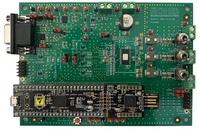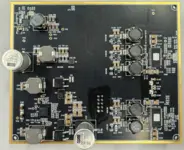BD18398RUV-M
3ch Current LED Driver with SPI for Automotive
BD18398RUV-M
3ch Current LED Driver with SPI for Automotive
The BD18398RUV-M is 3ch synchronous buck DC/DC LED driver with using on-time topology supporting near fixed switching frequency and fast switching duty regulation and with using average LED current feed buck topology for more accreted LED current regulation system over wide input, LED output range.
Product Detail
Functional Safety:

Specifications:
Topology
Buck
Vin(Min.)[V]
5
Vin(Max.)[V]
65
Total Output Current (Max.)[mA]
4800
Per Channel Drive(Max.)[mA]
1600
Number of Outputs
3
Vout(Max.)[V]
60
Switching Frequency (Max.)[MHz]
2.25
Data Transfer Rate(Max.)[MHz]
1
Integrated Switching FET
Yes
Dimming
DC / PWM
PWM Dimming Steps
1024
DC Dimming Steps
1024
Operating Temperature (Min.)[°C]
-40
Operating Temperature (Max.)[°C]
125
Package Size [mm]
12.5x8.1 (t=1.0)
Common Standard
AEC-Q100 (Automotive Grade)
Features:
- AEC-Q100 Qualified (Grade 1)
- ISO 26262 Process Compliant to Support ASIL-B
- On-time Topology for Near Fixed Frequency Switching
- Average LED Current Regulation
- Protection Diodes Less for Current Sense Pins
- Cycle-by-cycle Switch Over Current Protection
- Thermal Shutdown (TSD)
- Thermal Sensor Reading
- Serial Peripheral Interface (SPI)
- LIMP-HOME Mode
Reference Design / Application Evaluation Kit
-

- Evaluation Board - BD18397/98RUV-EVK-302
The BD18397/98RUV-EVK-302 Evaluation Board is an easy-to-use hardware platform that allows evaluation of both BD18397RUV-M and BD18398RUV-M devices for demonstration of LED dimming, sequencing, and protection performance.
-

- Reference Design - REF67012
- 5-ch LED Control Unit for Headlamp - Reference EVK
This LED control unit (LCU) is designed for versatility and seamless integration. It features a multi-channel LED control system for enhanced lighting performance, along with 4V DCDC converter and 5V LDO to provide external electronics (e.g., for animations).Communication with the vehicle is simplified through a single CAN_FD interface, and the local CAN network can be accessed via UART over CAN. Additionally, a LIN interface is included.

